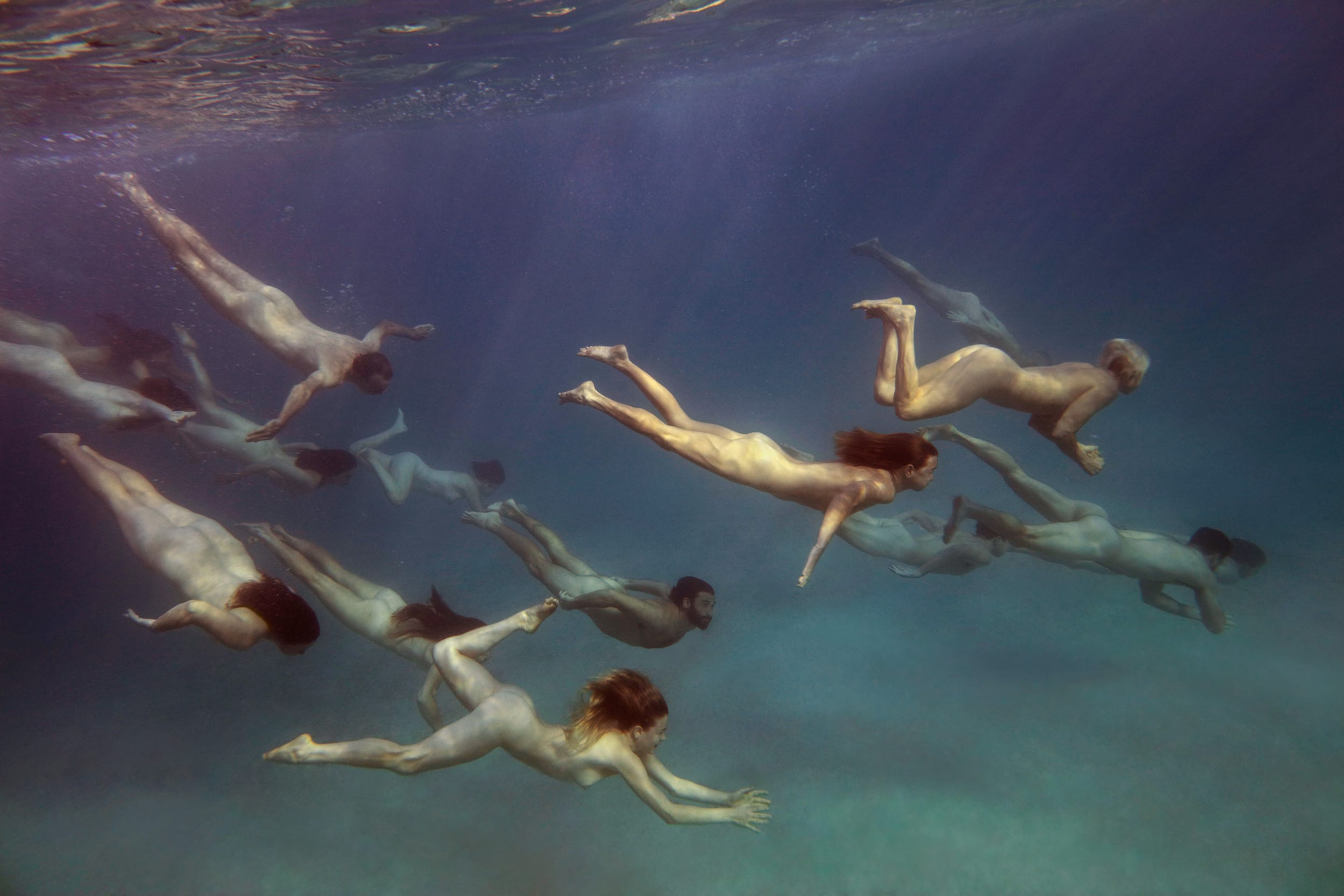
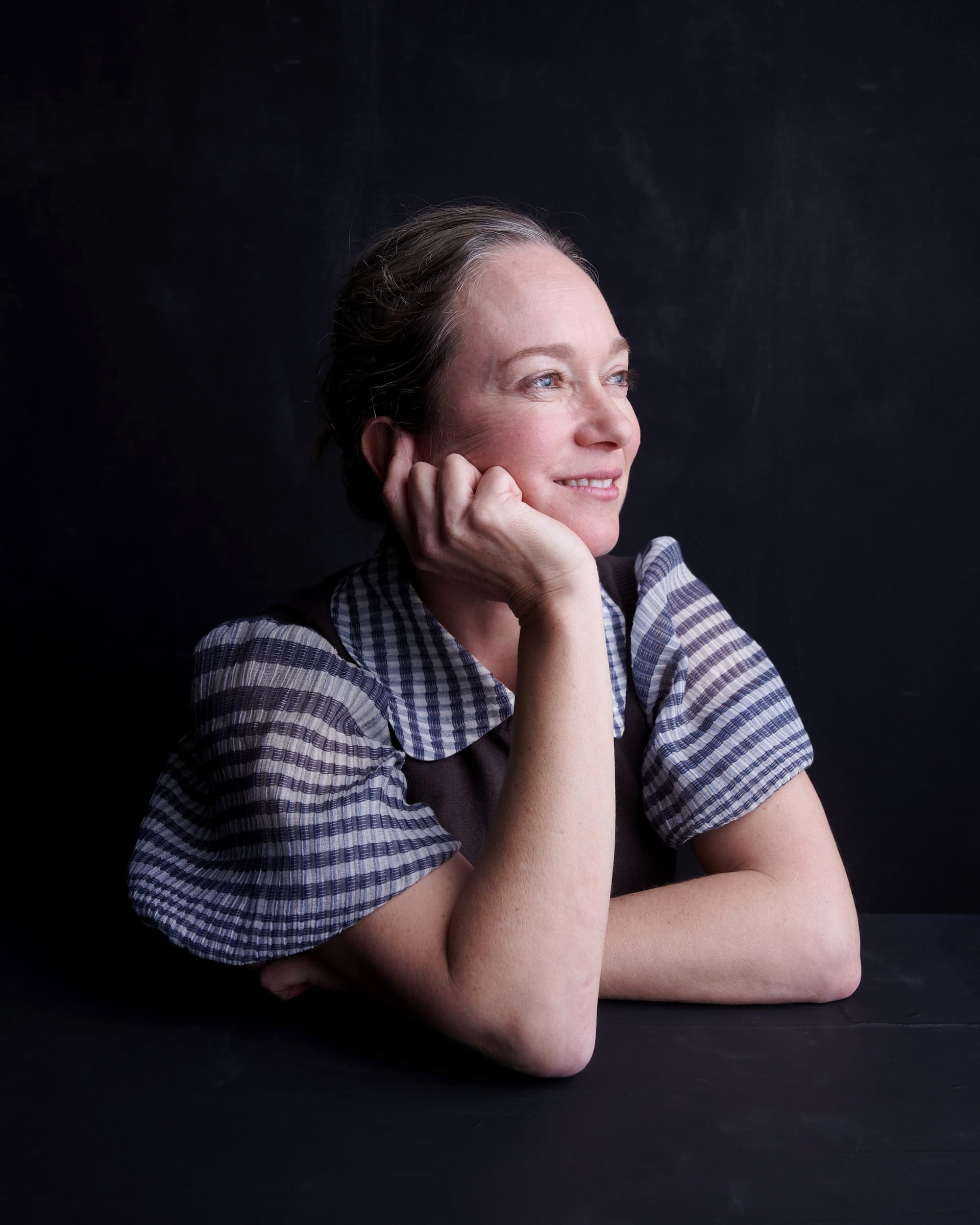
Tamara Dean believes art and beauty, rather than shock and horror, will keep people engaged with important issues. Her experiments in an underwater studio in her garden prove the point.
TAMARA Dean used to take photographs for newspapers. Stuff would happen—often bad stuff, like the aftermath of the tsunami in Thailand—and Dean would arrive, camera in hand, to document it.
These days Dean takes very different kinds of photos. Instead of getting politicians to sit for portraits or arriving on the scene after catastrophic events, you’ll find Dean asking people to take off their clothes and dive into the ocean and swim like a school of fish as she takes photos from above, bobbing on a pool noodle. Or she’ll spend days taking photos of surreal, floating still-life scenes in a purpose-built underwater studio in the garden of her home near Kangaroo Valley in New South Wales, calling on her teenage children to dive in and help arrange and rearrange the floating fruit and tablecloths until they’re just right.

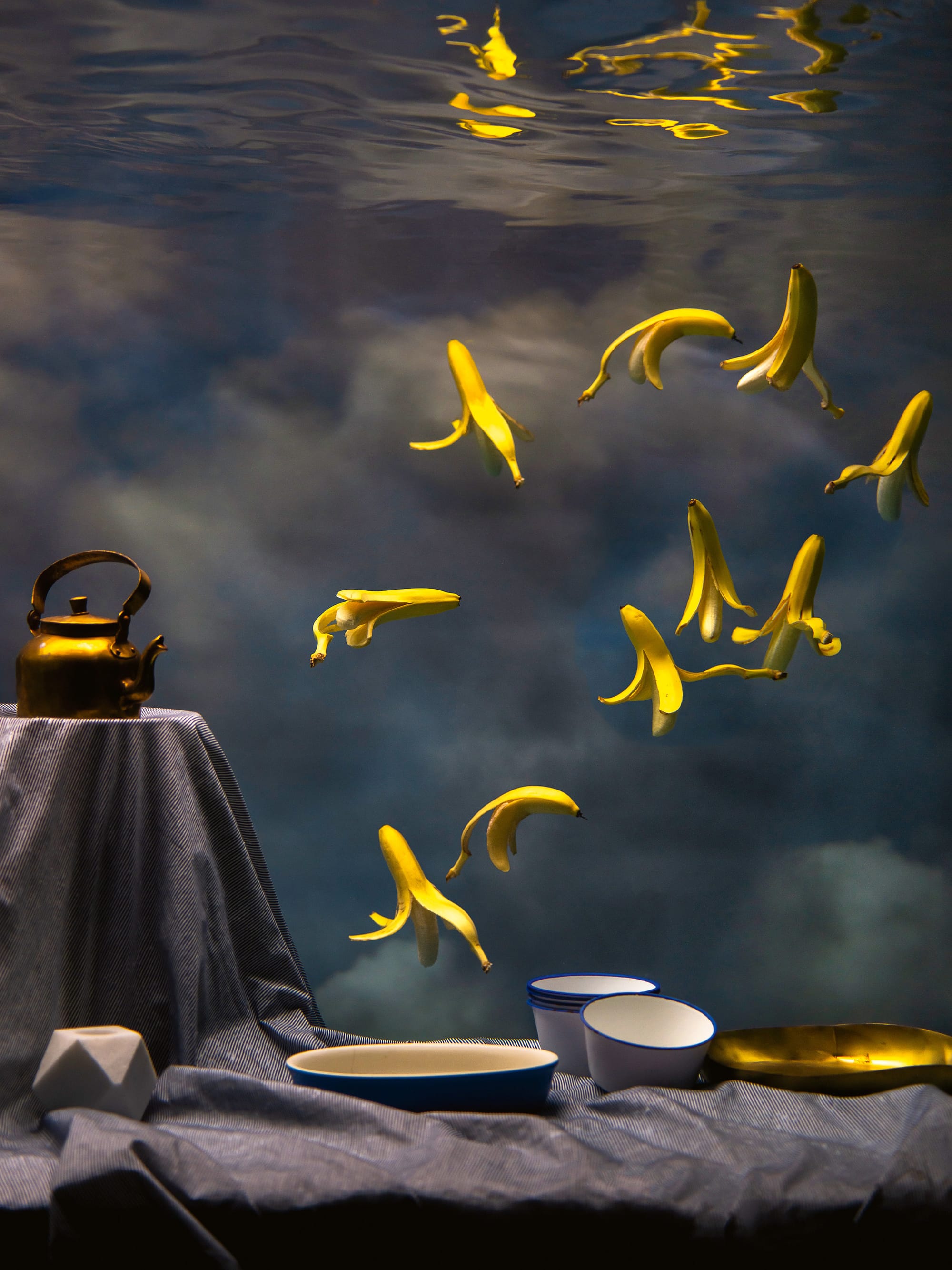
Tamara Dean says she wanted to find “a more constructive way to talk about the things I care about” through her photography. Portrait by Karina Dias Pires. Right, Going Bananas (2023), a work in The Suspended Moment series of photographs, in which still life doesn’t feel still: “The formal composition of the everyday is literally flooded,” says Dean.
On the surface, these fictional worlds of naked swimmers and floating bananas might seem less important than the news she documented for so long, but Dean wonders if they might be a more effective way to talk about her deepest concerns. If journalism is the first draft of history, is art the second draft that will keep us reading?
“I’ve been on the ground after the tsunami. I’ve seen disaster. And there is 100 per cent a critical place for that to be documented in the news. But there’s only so much a person—certainly I—can take in terms of watching the world crumble around us. Now I switch off to terrifying, terrible disaster imagery because I feel so powerless. I watch the news every night and it’s exhausting.”
Dean says the aim of her photography now is to keep people engaged with issues she feels are important—primarily climate change—through art, “so it can be in our awareness and our consciousness without us having to put up a wall because it’s just all too much”.
“I just find that it’s a more constructive way to talk about the things I care about,” says Dean. “And, weirdly, I feel like I have a further reach [than in news media] because works have a longevity in art.”
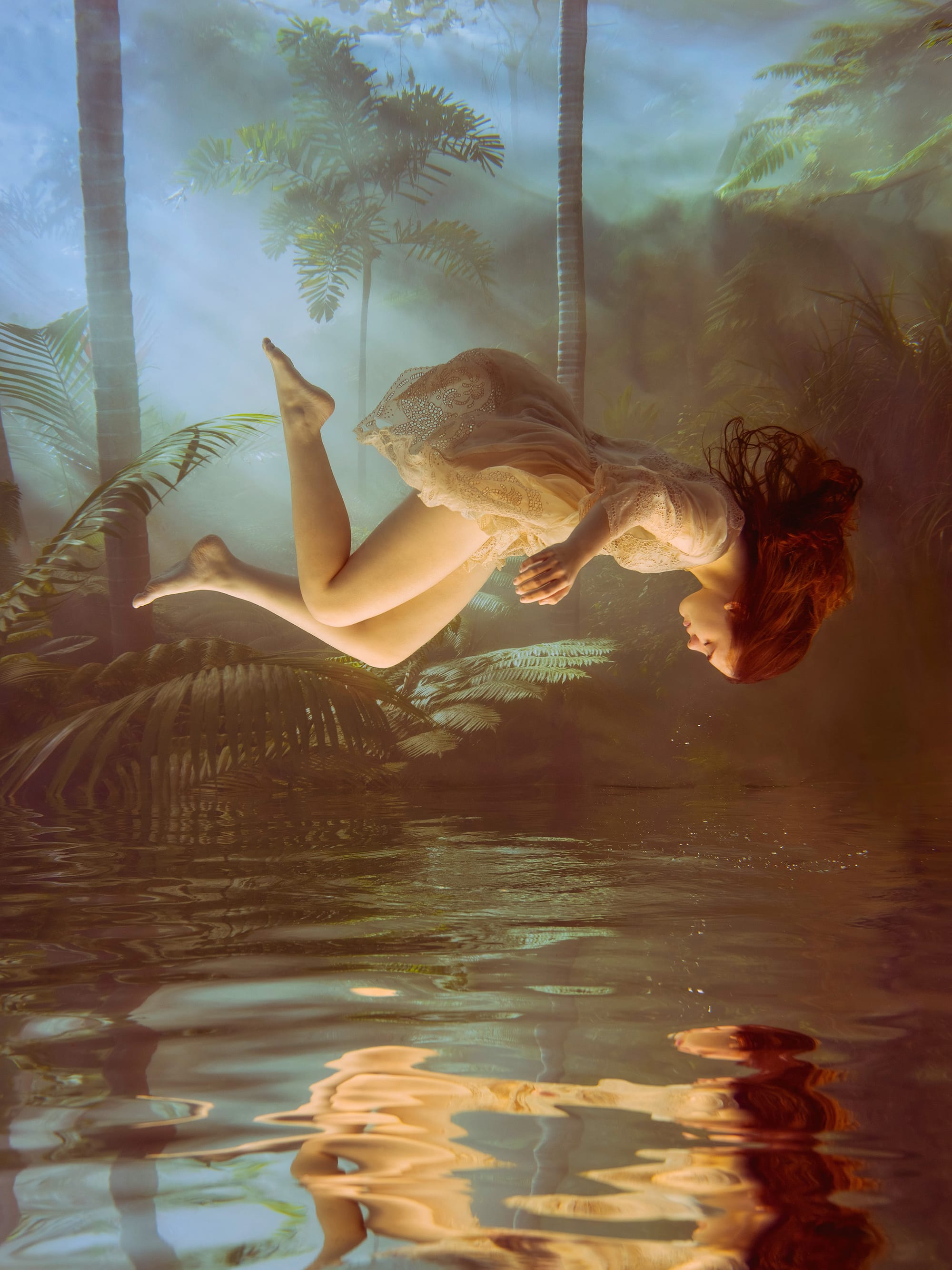
To say Dean’s art photography has reach is an understatement. She’s at the top of the contemporary art-photography world in Australia. At the Sydney Contemporary art show last year, her gallery, Michael Reid Sydney, sold more than $500,000 worth of her work in one weekend. There’s a waitlist of 900 collectors who want to see what she does next. And it’s not just collectors who love her work. The institutional galleries and museums do, too. The National Gallery of Australia and the Art Gallery of New South Wales are among those who have acquired a Tamara Dean.
“It’s a very powerful mix, when the images and the artworks are loved by collectors and the conceptual rigour is loved by the institutions and curators,” says Michael Reid Galleries director Toby Meagher. “One of the things Tamara is trying to do in her art is to create images that linger longer in the mind than the daily news cycle. She does a really good job of doing that. We’re so flooded with images now and the contemporary photographers who are really good are the ones who can make the images that just stay with you.”
It’s been almost 10 years since Dean stopped photographing news to focus solely on her art photography. Since then she’s created nine bodies of work, with many of them set near, in or under water.
In 2018, Dean ramped up her water shoots after buying underwater casing for her camera. Around that time, philanthropist Clare Ainsworth Herschell invited Dean, along with a group of business leaders, creatives and scientists, on a three-day trip to a research station at Heron Island in the southern Great Barrier Reef, as part of an initiative to educate and raise support for a climate-change movement. Dean had been thinking about photographing a group of people swimming naked underwater so that they resembled a school of fish. When she went snorkelling with some of the people in the Heron Island group, she saw her chance. >
“I just asked the group if they would consider jumping in nude for me for five minutes at the end of the session, just to try this idea out. And they were like, ‘Yeah, cool. No worries’.”
Everyone stripped off while Dean bobbed on the surface with a pool noodle to keep her and her camera steady, wearing a wetsuit and a full-face snorkel “because I’m a total chicken in the water”.
“I asked the people to dive down and then follow the most confident person. That created that sense of them appearing like a school of fish. That was the first time I did it. We all looked at the photos afterwards and just went, ‘Oh, my God. This is amazing’.”
Word got out, and more people on the Heron Island trip wanted to be part of the shoot. On the last day, as the sun was rising, about 16 people turned up, ready to take off their clothes and dive into the ocean. One of the photos from that morning went on to win the prestigious $50,000 Moran Contemporary Photographic Prize in 2019.
“The fish formation felt like a really great symbol to work with,” says Dean. “We’ve been so conditioned to see ourselves as this other thing to animals, and I was looking for something that could break down that mental barrier. Seeing the human form nude in water, you see how fragile our skin is. We’re not so different from the fish. Our fate is entwined with the fate of our environment.”
Even though Dean was scared of sharks and waves and was growing increasingly frustrated with the clunkiness of the underwater camera housing, she kept working on her Endangered series and the underwater ocean shoots. She even convinced her husband, filmmaker Jonnie Leahy, to learn how to scuba-dive so he could operate the camera underwater while she directed the photoshoots from above. That’s until she had an idea to build an underwater studio in her garden.
Her vision was a swimming pool, 12 metres long by four metres wide, with a perspex wall at the deep end, heated to 31 degrees so her subjects could float in comfort, built so that she could stand on dry ground outside the deep-end wall and take pictures through the perspex.
“I had this idea. I wanted to do it, so I just made it happen.”
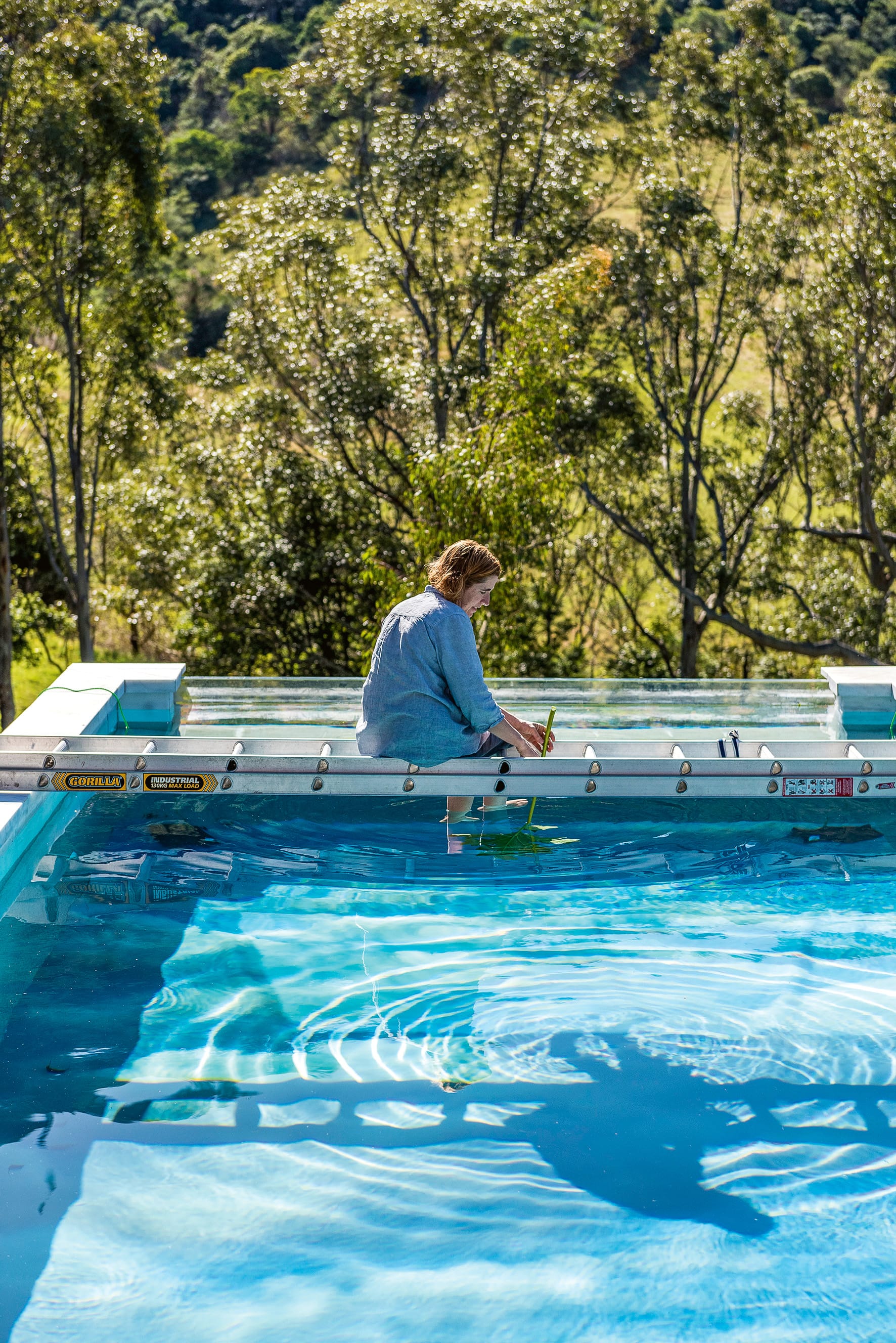

At Dean’s home near Kangaroo Valley, the purpose-built swimming pool with its perspex wall and her studio. Photography Ashley Mackevicius for The Scrutineer V and Karina Dian Pires.
Dean lined the internal walls of the pool with 10 metre-long backdrops onto which she had printed photographs of clouds and skies. The result was a beautiful underwater upside-down world, which she then invited people—her children, her friends—to float in. That was the series Palace of Dreams that sold like crazy at Sydney Contemporary last year.
This year she started experimenting with still-life scenes reminiscent of 17th-century Dutch paintings, setting up tables laden with fruit and ceramics and flowers in her underwater pool. In Dean’s world, the still life doesn’t feel so still. Bananas float and tablecloths gently billow. “The formal composition of the everyday is literally flooded,” says Dean.

Fifty years ago, Dean might not have used photography as a vehicle for her art. Photography in Australia was treated as a trade, not an art form. The National Gallery of Australia didn’t create a department dedicated to photography until 1977.
Now photography is recognised as art by all the major institutions. This year alone, Monash Gallery of Art in Victoria rebranded itself as the Museum of Australian Photography (MAPh), and the State Library of New South Wales has just opened a permanent photography gallery. And it looks like the retail market for Australian art photography—even though it’s much smaller than overseas—is finding its feet. In 2019, the highest price at auction for a single Australian photograph was paid: $122,000 for Vale Street (1975) by Carol Jerrems. Photographers such as Dean and Christian Thompson are gaining recognition as the next-generation Bill Hensons and Tracey Moffatts.
“It takes time for collectors to develop an understanding of and confidence in a new market,” says Meagher. “And that’s understanding everything from how edition structures work and how papers and pigments have been developing. There are prints from 30 years ago that would be horribly degraded now because of the kind of materials that we were using 30 years ago. But it’s come a long way. Pigment prints now for contemporary photographers are incredibly stable.
“As the medium develops and the technology behind the medium develops, the confidence in the medium develops. And, in my mind, it’s only going to continue to follow the pathway that it’s on because the visual literacy for photography is so high.
“Now, with phones, everyone in the world has become a photographer. We’ve all taken and looked at so many more photos than we could ever comprehend. But that means we’re all quite good at understanding and reading and being critical of photography. So there’s this kind of heightened literacy for photography, and I think that means good photography can be engaged with at a really high level by a lot of audiences in a way that painting will never be able to do because lots of us have never painted.”
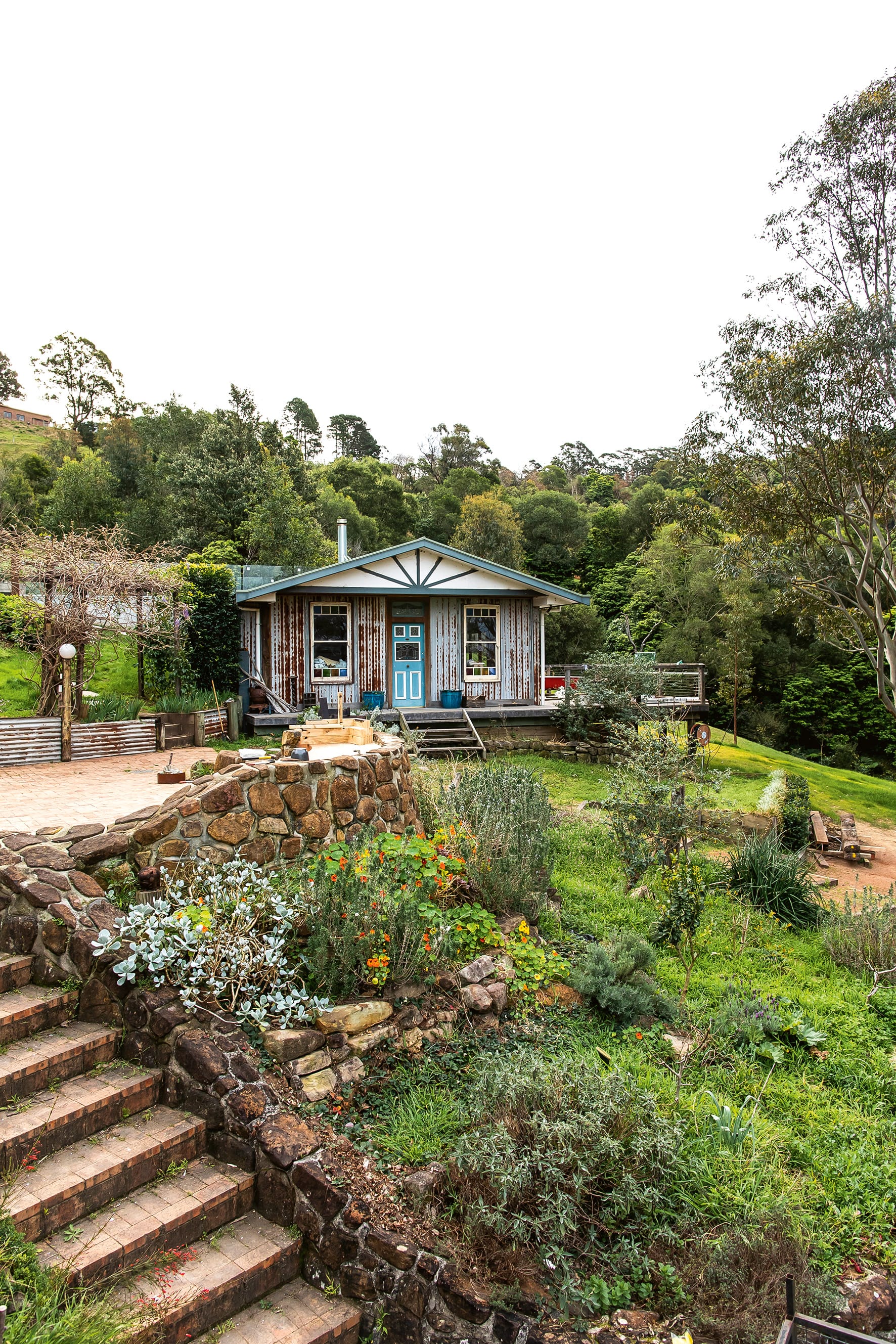
After seven years on her six-acre property in Cambewarra, Dean and her family have put their house, along with its underwater studio/pool, on the market. They want to stay in the area, but move to a smaller property. “I’m almost 48, and every time I pick up the whipper snipper, I break a little bit,” says Dean.
But what about the underwater studio; the home of her last two, successful, series? Where will she take her next series of photos?
Dean says she’s not at all worried about walking away from the pool. “I don’t have any fear about moving into a space that isn’t underwater. I sort of see it as like a chapter, rather than this is what I’m doing forever. Working in the pool is really exciting and inspiring—I love it—but I’m not scared of moving away from it. I know there’ll be something else that’ll excite me.”